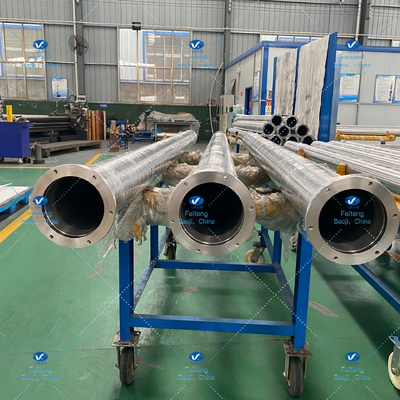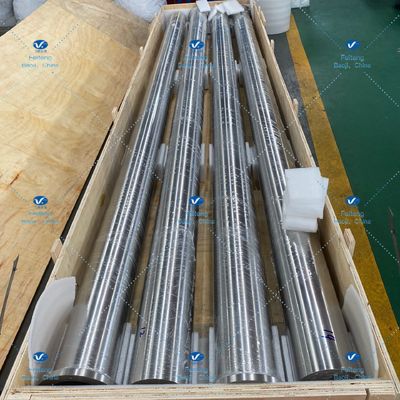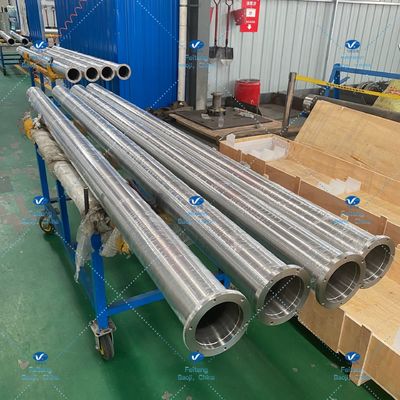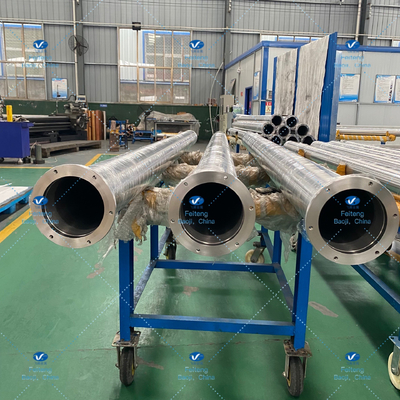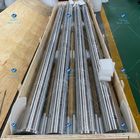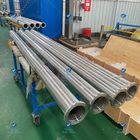133mm*125mm*2940mm Titanium Gr2 Tube Targets Include Flange
| Place of Origin | Baoji, Shaanxi, China |
|---|---|
| Brand Name | Feiteng |
| Certification | GB/T19001-2016 idt ISO9001:2015; GJB9001C-2017 |
| Model Number | Titanium tube target |
| Minimum Order Quantity | To be negotiated |
| Price | To be negotiated |
| Packaging Details | Vacuum package in wooden case |
| Delivery Time | To be negotiated |
| Payment Terms | T/T |
| Supply Ability | To be negotiated |

Contact me for free samples and coupons.
Whatsapp:0086 18588475571
Wechat: 0086 18588475571
Skype: sales10@aixton.com
If you have any concern, we provide 24-hour online help.
x| Model Number | Titanium Tube Target | Size | φ133*φ125*2940 Include Flange |
|---|---|---|---|
| Certification | GB/T19001-2016 Idt ISO9001:2015; GJB9001C-2017 | Grade | Titanium Gr2 |
| Specification | ASTM B861-06 A | Place Of Origin | Baoji, Shaanxi, China |
| Brand Name | Feiteng | Packaging | Vacuum Package In Wooden Case |
| Highlight | 2940L Gr2 Tube Targets,125mm Tube Targets Include Flange,133mm Titanium Tube Target |
||
Titanium Tube Target Titanium Gr2 ASTM B861-06 a 133OD*125ID*2940L Include Flange
| Item name |
Titanium tube target |
| Size | φ133*φ125*2940 Include flange |
| Grade | Gr2 |
| Packaging | Vacuum package in wooden case |
| Port of place | Xi'an port, Beijing port, Shanghai port, Guangzhou port, Shenzhen port |
Titanium is a chemical element, chemical symbol Ti, atomic number 22, is a silver-white transition metal, characterized by light weight, high strength, metallic luster, also has good corrosion resistance (including seawater, aqua regia and chlorine). Because of its stable chemical properties, good resistance to high temperature, low temperature, strong acid, strong alkali, as well as high strength, low density, is reputed as "space metal". Titanium was discovered in 1791 by William Gregor in Cornwall and named by Martin Heinrich Klaproth after the Titan of Greek mythology.
Titanium is considered a rare metal because it is dispersed in nature and difficult to extract. But its relative abundance ranks tenth among all elements. Titanium ore mainly ilmenite and rutile, widely distributed in the earth's crust and lithosphere. Titanium is also present in almost all organisms, rocks, water bodies and soil. The extraction of titanium from the main ore requires the Croll or Hunter process. The most common compound of titanium, titanium dioxide, is used to make white pigments. Other compounds include titanium tetrachloride (TiCl4) (used as a catalyst and in the manufacture of smokes or skywriting) and titanium trichloride (TiCl3) (used as a catalyst in the production of polypropylene).
Titanium can be fused with other elements such as iron, aluminum, vanadium or molybdenum into alloys, to produce high strength light alloys, which have a wide range of applications in various aspects. These include aerospace (jet engines, missiles and spacecraft), military, industrial processes (chemicals and petroleum products, desalination and paper), automobiles, agricultural foods, medicine (prosthetics, orthopedic implants and dental instruments and fillers), kitchenware, sporting goods, jewelry and mobile phones, etc.
Two of the most useful properties of titanium are corrosion resistance and the highest strength-to-weight ratio of any metal. In its non-alloy form, titanium is as strong as some steels, but 45 percent lighter. There are two allotropes and five natural isotopes, 46Ti (8.25%), 47Ti (7.44%), 48Ti (73.72%), 49Ti (5.41%), and 50Ti (5.18%). [8] Titanium has similar chemical and physical properties to zirconium because they have the same number of valence electrons and belong to the same group in the periodic table.
Features
1. Low density and high strength
2. Customized according to the drawings required by customers
3. Strong corrosion resistance
4. Strong heat resistance
5. Low temperature resistance
6. Heat resistance




